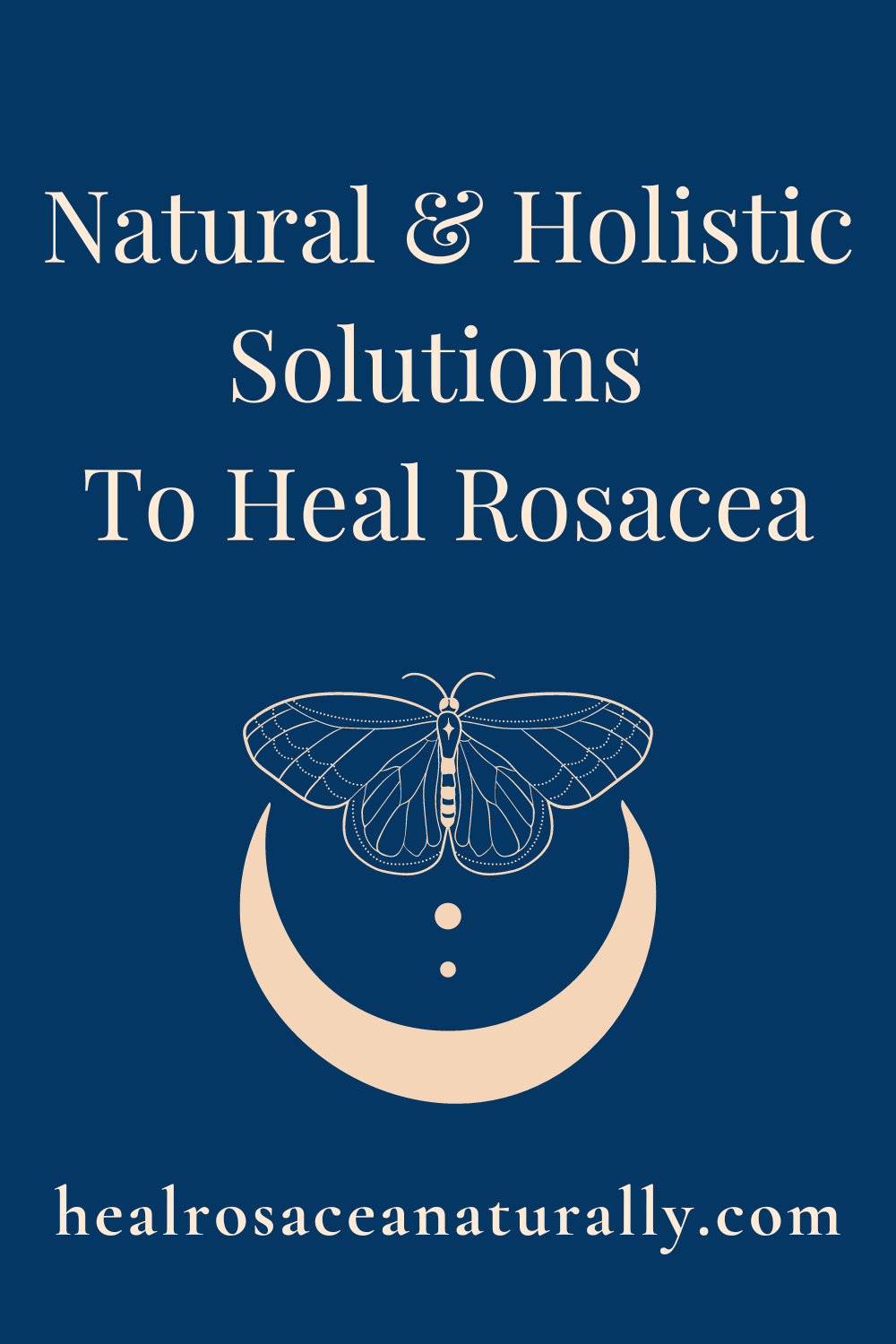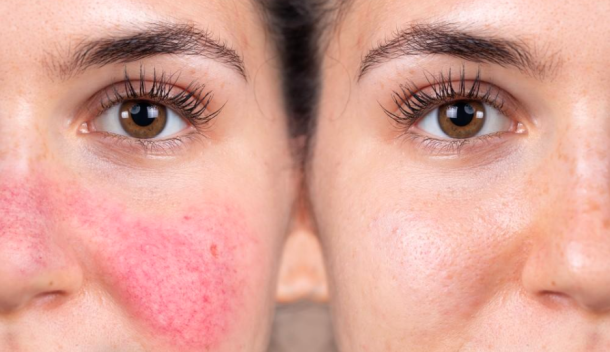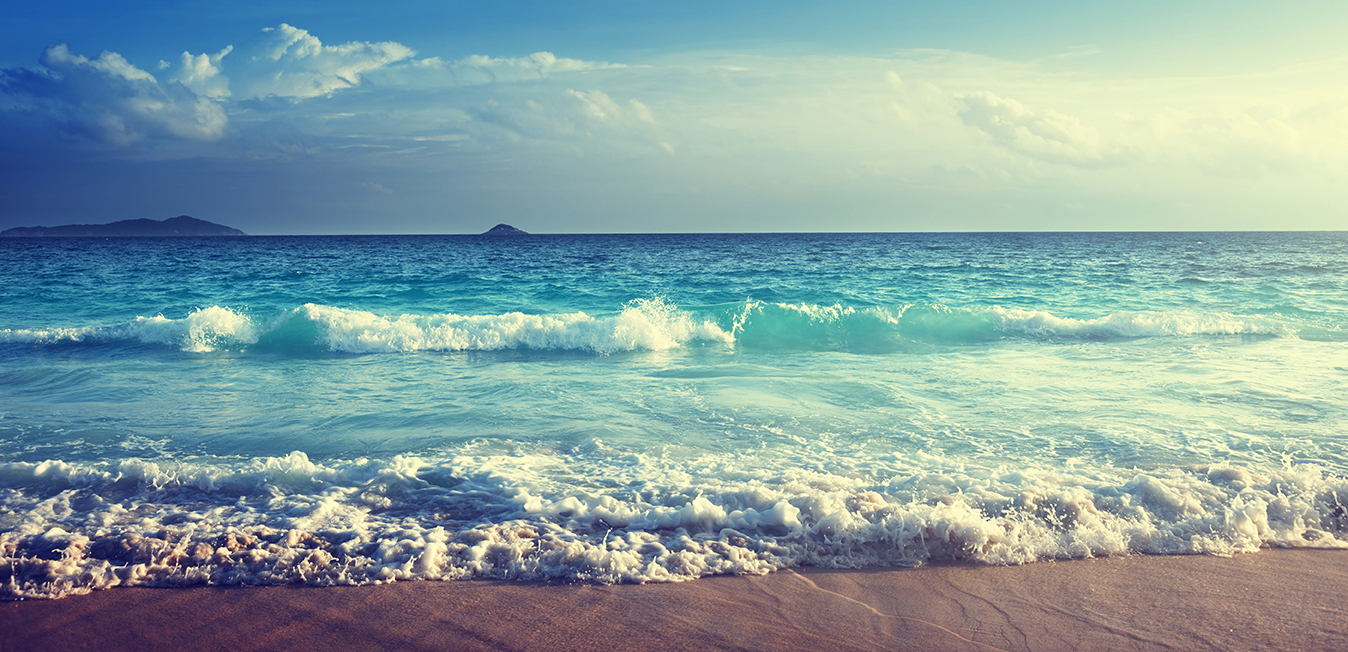
Best Non-Toxic Sunscreen For Rosacea & Sensitive Skin
Edited March 2023
Best non-toxic sunscreen for rosacea & sensitive skin
Let’s talk about toxic ingredients in sunscreens and the best, nontoxic alternatives safe for rosacea & sensitive skin.
Interested in learning more about healing rosacea naturally? Visit healrosaceanaturally.com.
What’s the deal with toxic ingredients in sunscreen?
The last time you packed for a trip to a warm and beachy destination, did you take a good look at the label of the sunscreen you threw in with your swimsuits? Did you know that many sunscreen companies are using toxic chemicals not only to coral reefs but also to your health?
As a savvy Journey To Glow reader, you’re well aware that your skin is the largest organ in your body and that what you put on your skin matters.
I know that I don’t have to tell you this, but, just for the sake of specificity (and for a chance to get skin-geeky for a hot minute), it matters because the transdermal route (the pathway by which active ingredients are delivered across the skin for systemic distribution) allows substances to enter the bloodstream and circulate throughout the body.
One thing I’ve learned on my journey to glow is that, for my skin to reflect the health and radiance I desire, my liver, blood and gut can’t be burdened by toxic chemicals. I can eat organic foods and drink my heavy-metal detox smoothie every morning, but if we’re constantly putting toxic creams on our skin, we won’t heal our bodies and skin.
So I decided to dig deeper and investigate what’s the deal with sunscreen these days, why the heck they contain so many toxic ingredients and what are the better, safer options.
For good measure, I’ve also tested several brands. At the end of this post, I’ll share a few sunscreens that made the cut. Scroll all the way to find my favorite non-toxic sunscreens.
Disclaimer
Writing an article on non-toxic sunscreen has been extremely frustrating and time-consuming. The amount of information online (often incomplete or contradictory) and the lack of up-to-date research make it quite challenging to write an article that provides real answers. At the end of the day (and as always), I’m going to invite you to do your research so you can make an informed choice but also not fall prey to greenwashing.
Key points in this blog post
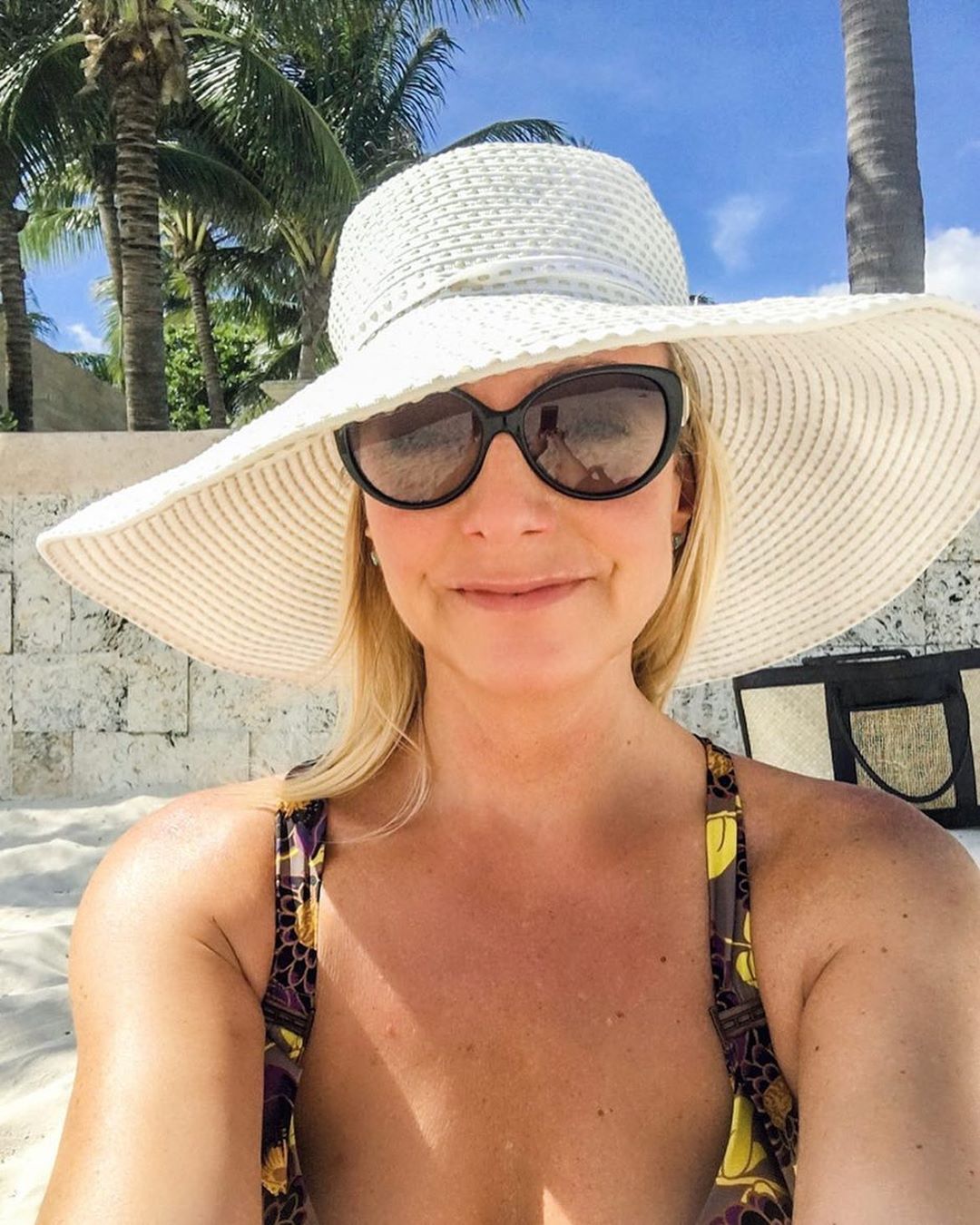
Key points of this blog post:
1. Toxic ingredients hiding in your sunscreen
2. The impact of toxic ingredients on health & skin
3. Why are toxic ingredients banned in Europe but not in the US
4. Ingredients in sunscreen unsafe for marine life & reefs
5. What, exactly, are chemical sunscreens
6. A list of ingredients to avoid
7. How UV rays work
8. How SPF work
9. What broad-spectrum means & why we want it
10. What is a mineral sunscreen and it works
11. What you need to know about sunscreen application
12. How to choose an effective non-toxic sunscreen
13. Safe sun exposure (and living your life)
14. My sun tips for sensitive, rosacea-prone skin
15. My current favorite non-toxic sunscreens safe for rosacea and sensitive skin
What’s that in my sunscreen?!
If you’ve been listening to the Journey To Glow podcast, you’ve heard us mention oh-so-many-times that your liver plays a key role in cleansing your body of toxic heavy metals, viruses, pathogens and other detrimental fiends. When we use skincare filled with toxic chemicals, we’re not only adding one more thing to our liver’s long list of to-dos but also introducing chemicals that are endocrine disruptors. More on that later…
I became aware of toxic ingredients hidden in conventional sunscreens from a news article I read a few years ago. It announced that Hawaii was the first state in the US to ban the sale of sunscreen containing coral-harming chemicals such as oxybenzone and octinoxate.
This article triggered my curiosity, so I started to research why those chemicals were toxic to coral reefs and, ultimately, our bodies.
I immediately rushed to my bathroom cupboard to examine the labels of my sunscreen products. Sure enough, staring back at me were the exact same ingredients Hawaii didn’t want near their corals. And yeah, I didn’t want them on my skin either.
Interestingly enough, reports from the Environmental Working Group (EWG.org) have warned consumers against using several brands of conventional sunscreens that include toxic ingredients. (We’re going to talk about how these chemicals are absorbed through the skin and end up in our blood a little later on, so keep reading.)
To say that I was shocked that chemical ingredients such as oxybenzone, octinoxate, homosalate, fragrance and parabens were widely used in sunscreen is an understatement.
Yet, that moment was another wake up call for me. If skincare companies (or the government) didn’t have my health at heart, I would need to become better informed and smarter about the products I’m using every day.
What’s the deal with toxic ingredients in sunscreen?
A recent report published by the EWG shows that nearly two-thirds of all sunscreens evaluated in their “2019 Guide to Sunscreens” wouldn’t pass safety tests proposed by the FDA (the US Food and Drug Administration) yet are allowed to be widely sold on the consumer market. Say what?
In case you didn’t know, the EWG releases its analysis as part of their “Guide to Sunscreens,” which is a yearly report that the nonprofit has been publishing since 2006. It’s a great resource, and I highly recommend you read it.
And check this out: In February 2019, the FDA called for additional testing of a dozen common sunscreen ingredients after finding that high levels of avobenzone, oxybenzone, ecamsule and octocrylene can enter a person’s bloodstream after just one day of use. Tests also showed that these toxic chemicals remain in the body for at least 24 hours after the last sunscreen application.
Apply sunscreen everyday for an entire summer season, and you’ve just added that much more toxic crap for your liver to have to deal with. Not ideal considering what we know about the skin-liver connection.
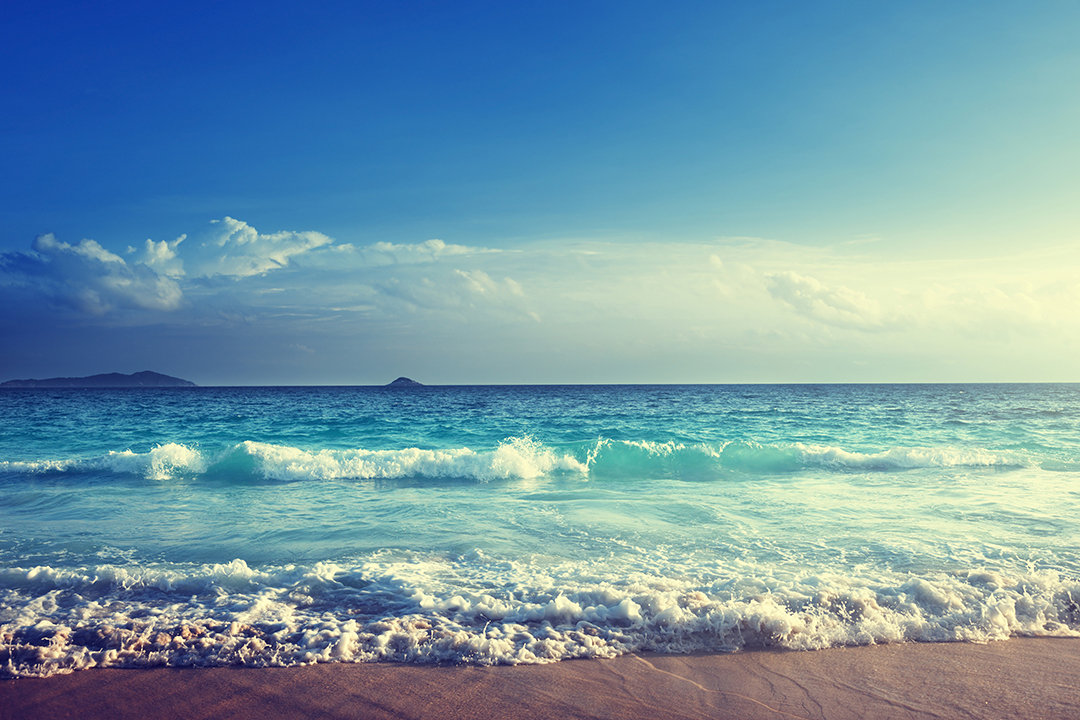
The impact of toxic ingredients for
your body, health & skin
If you’ve been listening to the podcast, you’ve heard us mention oh-so-many-times that your liver plays a key role in cleansing your body of toxic heavy metals, viruses, pathogens and other detrimental fiends. When we use skincare filled with toxic chemicals, we’re not only adding one more thing to our liver’s long list of to-dos but also introducing chemicals that are endocrine disruptors. More on that later…
Why are toxic ingredients banned in Europe
but not the US?
Quick fact: The European Union has replaced oxybenzone with other, safer ingredients, and yet it remains in use in the US. In fact, a 2018 report by the EWG estimated that oxybenzone was used in two-thirds of all chemical-based sunscreens sold in the United States.
In cosmetics alone, the EU has banned or restricted more than 1,300 chemicals while the US has outlawed or curbed just 11.
You’ll find formaldehyde, a known carcinogen banned in EU, in plenty of skincare products in the US. Parabens (linked to reproductive issues) and coal tar dyes are ruled out in the EU but not the US.
Shocking and, again, why we shouldn’t entrust our health in the hands of skincare companies — or our governments, for that matter.
Ingredients in sunscreen unsafe for marine life & reefs
Oxybenzone and octinoxate are two ingredients believed to contribute to coral bleaching. When coral bleaches, it is not dead but under significant stress and subject to increased mortality levels.
According to the National Park Service, 14,000 tons of sunscreen enter coral reefs every year.
These chemicals are believed to be one of the contributing factors to coral reef destruction. Yet, most popular sunscreen brands are known to contain these dangerous chemicals. These brands include Coppertone, Hawaiian Tropic and Banana Boat, to name a few. However, we’re starting to see a trend of these big brands creating new, less toxic sunscreen made without oxybenzone & parabens.
Switching to non-toxic, mineral-based sunscreen is important not only to protect our skin from burns and cancer and defend our liver against toxic overload (and potentially cancer) but also to preserve our oceans and marine life.

What, exactly, are chemical sunscreens?
Chemical-based sunscreen uses one or more chemicals including oxybenzone, avobenzone, octisalate, octocrylene, homosalate, and octinoxate.
As I’ve mentioned before, these chemicals raise concerns because they’re able to cross into skin and make it all the way into our blood.
Here’s a list of ingredients to avoid:
1. Oxybenzone
Oxybenzone is a known hormone disruptor that can also trigger allergic reactions. The EWG has reviewed the existing data about human exposure and toxicity for the nine most commonly used sunscreen chemicals. Oxybenzone is the most worrisome as it can cause allergic skin reactions (Rodriguez 2006). Also, in lab studies, oxybenzone has been shown to have strong anti-androgenic effects (Krause 2012, Ghazipura 2017).
The EWG recommends that consumers avoid sunscreens with oxybenzone.
But sunscreen users are exposed to other active ingredients too. Margaret Schlumpf of the University of Zurich detected four other sunscreen filters along with oxybenzone in Swiss women’s breast milk, which suggests that the developing fetus and newborns may be exposed to these substances (Schlumpf 2008, Schlumpf 2010). She detected at least one sunscreen chemical in 85 percent of milk samples.
2. Retinyl palmitate
etinyl palmitate is a form of vitamin A linked to skin tumours and lesions on sun-exposed skin. A 2012 study by U.S. government scientists suggests that retinyl palmitate may speed the development of skin tumours and lesions when applied to the skin in the presence of sunlight (NTP 2012). Officials in Germany and Norway have cautioned that retinyl palmitate and other vitamin A ingredients in cosmetics could contribute to vitamin A toxicity when combined with excessive exposure to the sun (German BfR 2014, Norwegian SCFS 2012a).
https://www.ewg.org/sunscreen/report/the-problem-with-vitamin-a/
3. The “Dirty Dozen” ingredients
The “Dirty Dozen” ingredients include parabens, phthalate, PEG, parfum (a.k.a. fragrance) and sodium lauryl/laureth sulphate.
4. Category II ingredients
Based on existing data, the FDA has also concluded that two active ingredients often found in sunscreen, PABA (amino benzoic) and trolamine salicylate, are unsafe and have been placed in Category II. These two active ingredients are not used in any sunscreens currently marketed in the United States, but keep your eyes open if you have an old bottle lying around somewhere.
5. Category III ingredients
According to the FDA, the Category III sunscreen ingredients lack sufficient data to support whether they are generally recognized as safe and effective. Existing evidence suggests that these active ingredients are, or may be, absorbed through the skin, and data about the consequences of this absorption are missing. The 12 Category III sunscreen ingredients are cinoxate, dioxybenzone, ensulizole, homosalate, meradimate, octinoxate, octisalate, octocrylene, padimate O, sulisobenzone, oxybenzone, and avobenzone.
How do UV rays work?
Humans need a healthy amount of sun daily to ensure an adequate amount of Vitamin D, a vitamin necessary for cellular function. Overexposure to UV radiation, however, can bring its fair share of problems. That’s why we need to consider using a clean, non-toxic sunscreen. (More tips on safe sun exposure below…)
There are two types of ultraviolet rays: UVA and UVB.
UVA comprises UVA1 & UVA2. UVA rays are the rays that tan your skin. They’re the deeper penetrating rays responsible for long-term damage such as skin aging, wrinkles and cellular damage.
Overexposure to UVA rays is now believed to be a key contributor to the most aggressive and potentially deadly form of skin cancer, melanoma.
UVB rays are primarily responsible for reddening or “burning” of the outer layers of skin. UVB damage and sunburn can also cause skin cancer. Each incidence of burning to a peel is believed to increase one’s risk of skin cancer by 50%.
To easily remember the difference between the two, UVA is related to aging/tan, and UVB is related to burning/sunburn.
Rosacea articles & resources
Free masterclass: 9 Misconceptions That Keep You Stuck On Your Journey Healing Rosacea
Read about my journey healing rosacea on healrosaceanaturally.com
Rosacea skincare article
Natural makeup for rosacea article
Work with me healrosaceanaturally.com
Interesting facts about UV rays:
- The intensity of UVA rays remains constant throughout the seasons of the year.
- UV exposure can be increased by as much as 25%, 50% and 80% from the reflection off of sand, water and snow.
- UVA rays penetrate through glass windows so yeah, you need sunblock when driving!
- Higher elevations increase the intensity of UV rays and can possibly lead to exposure of UVC radiation. So, a cooler temperature because you’re climbing Mount Kilimanjaro doesn’t mean you shouldn’t wear sun protection!
- Over 90% of UV radiation hitting the earth is composed of UVA rays.
- Over 80% of UV radiation, especially UVA radiation, can penetrate cloud cover all year round, which is why dermatologists suggest wearing sunscreen every day.
- UV damage is cumulative throughout our lifetime, meaning each occurrence stacks up on the previous. Each time a person sunburns to a peel, their risk of cancer increases by 50%.
- People with more than 40 moles are 3 times more likely to develop skin cancer.

How does SPF work?
SPF (Sun Protection Factor) is a relative measure of how long a sunscreen will protect you from ultraviolet UVB rays.
As the experts at Raw Elements USA explain, this amount is measured in percentages and is not a linear scale. For instance:
SPF 15 blocks 93% of UVB rays,
SPF 30 blocks 97% of UVB rays,
SPF 50 blocks 98% of UVB rays,
Therefore, SPF 50 only provides 1% more protection than SPF 30.
What most people don’t know (heck, I didn’t know) is that SPF alone will not protect you from the deeper penetrating UVA rays (the rays thought to be the main cause of melanoma, the most dangerous form of skin cancer).
So, how do we protect ourselves from both UVB and UVA? A broad-spectrum sunscreen.
What does broad-spectrum mean & why do we want it?
Broad-spectrum is defined as an overall protection from both UVA and UVB rays. In order to have true broad-spectrum protection, the UVA protection should be at least 1/3 of the UVB protection.
What is a mineral sunscreen and how does it work?
Sunscreens that use mineral filters as the primary active ingredient are called physical, inorganic or mineral sunscreens. The active mineral ingredients in sunscreens are zinc oxide and/or titanium dioxide. Zinc oxide is a naturally occurring mineral formed from the metal zinc. Titanium dioxide is also a naturally occurring mineral that is formed from the metal titanium.
These mineral filters create a physical barrier on the top of the skin. The mineral filter sunscreen molecules reflect and scatter both UVA and UVB rays from the skin. Unlike chemical sunscreens, the mineral filters do not break down and release heat into the skin.
Both zinc oxide and titanium dioxide are said to be safe and very stable in formula as well as when exposed to the sun. Since they’re not absorbed by the skin, they will not cause an allergic reaction, which is key for people (like me) who have sensitive skin.
The safest sunscreen filters are non-nano zinc oxide (non-nano means that it will not be absorbed; it will sit on top of the skin) and titanium dioxide.
What you need to know about sunscreen application
First, don’t be fooled by the SPF.
An SPF 30 does not mean that a sunscreen protects your skin for 2xs longer than SPF 15. It does not measure a product’s ability to protect your skin from UVA rays, which are also damaging. So, applying an SPF 50 sunscreen doesn’t mean you get to stay in the sun for hours in the middle of the day when the rays are at their strongest.
Re-apply often
A general rule is to re-apply often. All sunscreen, whether SPF 15 or 70, needs to be applied and reapplied to fully protect our skin. That means you’ll need to reapply every few hours and if you’ve been swimming, exercising and sweating.
My sun tips for rosacea and sensitive skin
1. Wear a wide-brim hat
My number one tip? Wear a wide-brim hat! Yes, I even wear mine on my paddleboard. I wear sunglasses on my board as well, but I make sure they’re secured with an attachment so that, if I fall in the water, my sunglasses won’t end up at the bottom of the lake. Your hat will most likely float, so you’ll have time to get to it. #lol I have several hats at home, but I like to purchase hats that can be folded when I travel. That way, I don’t have to be the tourist with the cumbersome hat in the airplane. #travelsmart
2. Carry sunscreen in your bag
I always carry sunscreen in my bag and reapply often. I use this one for my face and this one for my body.
3. SPF Foundation, Tinted Sunscreen & SPF Powders
I love tinted SPFs! The really good ones such as Davincia’s Sunbrella are soothing to rosacea, acne and sensitive skin and also double as a light foundation or primer. The ingredients include Hyaluronic acid, Water lily root extract, Sea buckthorn oil, Zinc oxide (micronized and non-nano) and Green tea extract. All clean, non-toxic and safe for rosacea. (It’s actually SOOTHING to inflamed rosacea skin.)
4. Choose shade over sun mid-day
Seek the shade when the sun is at its most potent around noon. If you can’t find shade, carry a light organic cotton shawl to cover your shoulders.
How to choose an effective non-toxic sunscreen for rosacea
Raw Elements USA suggest we look for Non-Nano Zinc Oxide percentages over 18% to be fully effective. Titanium dioxide does not cover the full range of UVA radiation by itself, so it must be paired with Non-Nano Zinc Oxide to be broad-spectrum.
Use Broad-Spectrum SPF 30
Beware of lower or higher numbers. It is a widely accepted that Broad-Spectrum SPF 30 is the benchmark needed to provide adequate UVB & balanced UVA protection. Remember that a higher SPF does not give you much more protection, so a high SPF of 50 or more provides a false sense of security.
Choose ʻWater-Resistant 80 Minutesʼ
Water-Resistant 80 Minutes has a proven track record. The term ‘Water-Resistant 80 Minutes’ is regulated by the FDA and represents a sunscreenʼs ability to remain effective after 80 minutes of exposure to water.
A product that is Water-Resistant 80 Minutes will likely offer better sweat resistance as well.
Avoid sprays or powder sunscreens
Avoid sprays or powder sunscreens as these applicators expel excess amounts of chemical ingredients, which immediately become lung inhalants and pose a health hazard. These chemicals become airborne and indiscriminately pollute the environment.
Safe sun exposure (and living your life)
The general consensus about sun safety is to stay out of the sun between 10am and 3pm, to cover yourself with clothes, to avoid extended periods of exposure, or to stay in the shade.
I’m a big believer that living a full life and enjoying myself is crucial to my journey to glow. So is listening to my body and mind. If I’m craving nature and the outdoors, I obviously won’t hide indoors because it’s noon, but I’ll prepare accordingly.
Use your judgement and trust yourself, don’t be afraid of the sun!
PS: once the inflammation in my body was lowered, my skin stopped reacting to the sun.

Let's build your rosacea healing blueprint
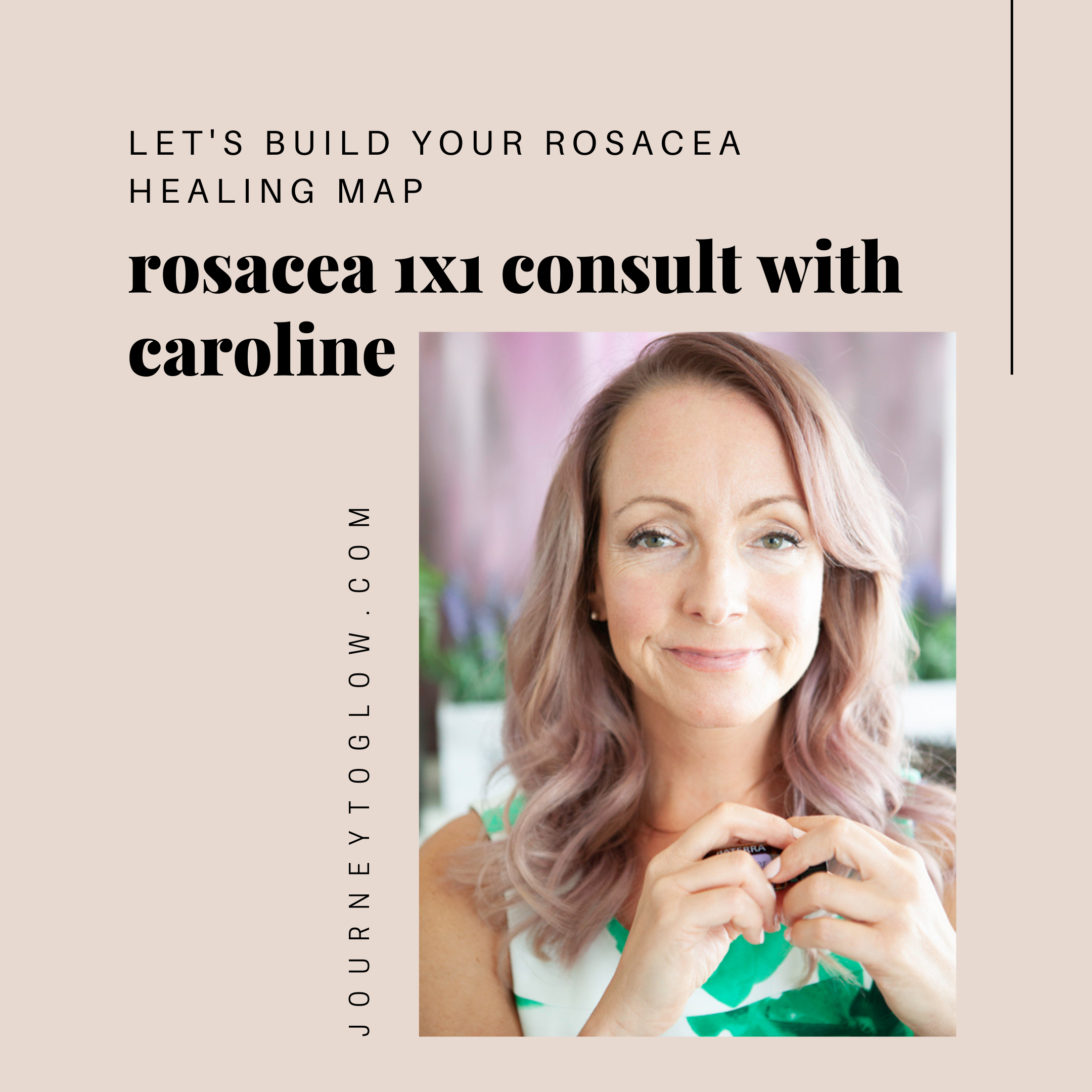
Functional Nutrition & Herbal Medicine For Rosacea
As a Functional Nutrition Practitioner, Skin Herbalist, Certified Advanced Transformative Coach, and someone who’s personally been on a rosacea healing journey, I’m equipped to work with clients in a unique capacity.
My approach – which is personalized and designed to support each of my clients’ bio-individuality – enables me to get to the root cause(s) that brings about skin inflammation.
Once we’ve pinpointed the possible root causes (emotional, physical, or environmental), we work to support the body back into balance, so it can heal itself.
The result? Clear, glowing skin.
Resources & Links
https://davidsuzuki.org/queen-of-green/choose-safe-sunscreen/
https://www.ewg.org/sunscreen/report/the-trouble-with-sunscreen-chemicals/
https://www.ewg.org/sunscreen/report/nanoparticles-in-sunscreen/
https://lovesunbody.com/blogs/news/spf-alone-is-not-enough
https://www.theguardian.com/us-news/2019/may/22/chemicals-in-cosmetics-us-restricted-eu
https://www.rawelementsusa.com/pages/sun-protection-guide
https://www.skincancer.org/prevention/sun-protection/sunscreen/sunscreens-explained

